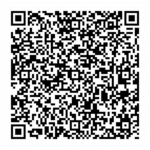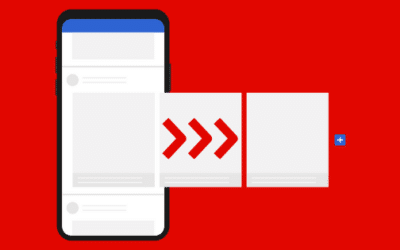Discover a comprehensive guide for creating an immersive course which allows your learners to experience an employee or customer’s typical day
What’s the purpose of creating an immersive course?
As part of Women’s Rights Day, we created a course about everyday sexism, which was made accessible free of charge on Teach on Earth, an app which raises awareness about social and environmental issues. To best deal with this topic and to have the greatest impact, we sought to make learners feel/experience everyday sexism. To do so, we altered our usual training format and provided a day in the life of a woman immersion. The ‘day in the life of…’ format combines storytelling, immersion, professional guidance and enables learners to really experience the daily life of an employee or customer.
Step 1 – Creating the character
The first step is to choose the character’s profile and describe their daily life:
- A typical customer
- A team member
- A service provider, etc.
Next, you need to create the character’s profile:
- First name
- Place of residence/work
- Profession
- Personality (character traits, hobbies, etc.)
You will also be able to add secondary characters (colleagues, family, friends, etc.) who will appear at various stages in the story.
To add credibility to the story, you can supplement it with media such as photos of your character(s) in action, dialogue between two characters in a WhatsApp or audio type conversation for example, screenshots of the character’s telephone, etc.
Step 2 – Set the tempo of your character’s day
Now you need to create your character’s typical day and set the right tempo in order to create key moments.
Please note: the high points should help to paint a picture of your character’s day. Don’t forget to include ‘downtime’ moments such as breaks, etc. to create a realistic typical day.
A typical day should contain at least 5 key moments. For example:
- Arrival in the office/store/on-site
- Encounter with a colleague, customer, supplier
- Lunch break (who do they eat with and where?)
- Meeting with X
- Return home
To set the tempo of the day, you can add the time for each key moment. Here are the ‘highlights’ of the day in the life of a woman course:
7:25 am – she’s been up for over an hour, she is showered, dressed and ready.
8:30 am – arrives at the office
12:30 pm – lunch break
2 pm – meeting with her boss, Bertrand
4:28 pm – Anna’s phone rings
5:37 pm – returns home
6:30 pm – her partner Sam gets home
9:30 pm – the children go to bed
11:12 pm – Anna goes to bed
Step 3 – Add transmission elements
Apart from allowing the learner to experience the character’s life, this course is, above all, a way to transmit fundamental concepts about specific skills, protocols, key figures, etc. The course should therefore contain ‘formal’ elements.
????Tip: to separate the natural and formal elements in the character’s day, you can alternate the type of mobile course card.For example, you can create ‘transition’ type cards for moments of the day and information cards for formal elements. What’s more, you’ll need to add at least one scored activity to check that the information conveyed has been learned.
Regarding the ‘day in the life of a woman’ course, we interspersed the key moments in the character’s day with important figures about everyday sexism. For example, our character overhears a conversation between two colleagues in which a sexist joke is thrown in. We follow this up with a key figure about sexism in the workplace: “Like 38% of French workers, Anna has already heard sexist jokes in the workplace”.
Now you’re ready to create immersive ‘day in the life’ format courses and look again at ways of transmitting specific skills, the sales ritual, etc.
If you want to explore our ‘day in the life of a woman’ course, simply:
- Download the Teach on Earth app (100% free of charge and available on Android and Apple)
- Scan the QR code below:

Have a great immersion!

D’abord éditrice de manuels scolaires, professeure et coordinatrice pédagogique à l’Université, Julia a rejoint l’équipe Learning Experience chez Teach on Mars pour apporter ses compétences en pédagogie. La gamification et la différenciation pédagogique sont notamment ses chevaux de bataille.




